What trees can be planted on the site along the fence?
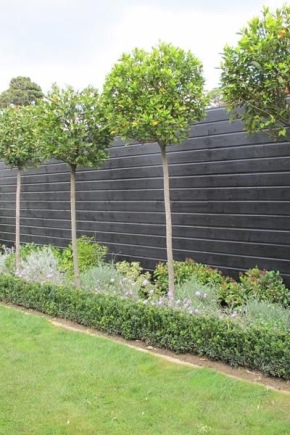
Landscaping your home garden is an important and time-consuming process. The appearance of the adjoining area depends on the personal preferences of the owners. Perhaps this is a practical garden or an area decorated with ornamental trees and shrubs. Having determined your needs, it is necessary to take into account not only financial capabilities, but also objective constraints.
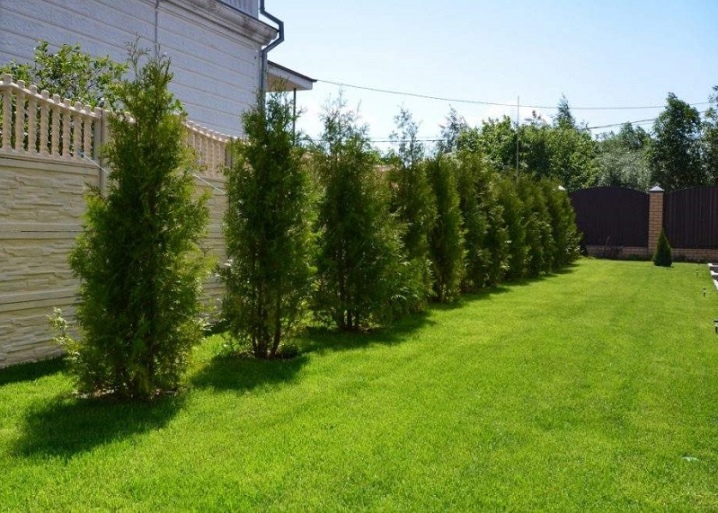
Tree functions
Trees are the main component of any landscape. Their competent location will add completeness to the territory and solve a wide variety of improvement tasks.
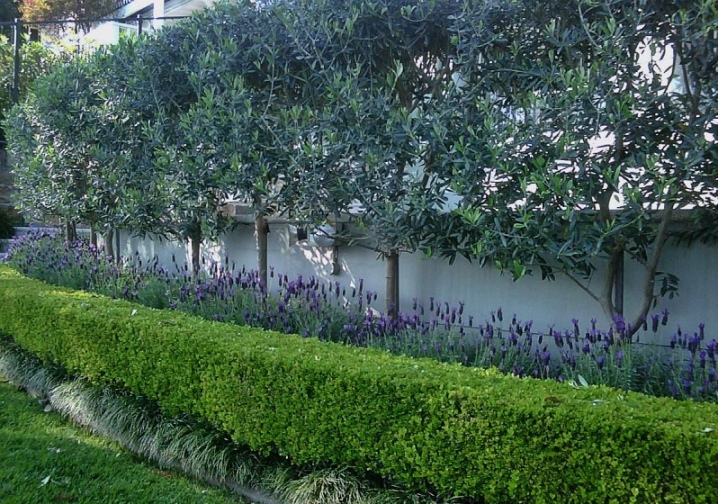
The trees on the site perform several functions at once:
-
improve the microclimate by purifying the air;
-
additionally trap dust and exhaust gases, which is especially important if the border of the site runs along the carriageway;
-
strengthen the slopes and prevent the weathering of fertile soil on an inclined surface;
-
create a shadow;
-
divide the space of the personal plot into separate zones;
-
enclose the territory.
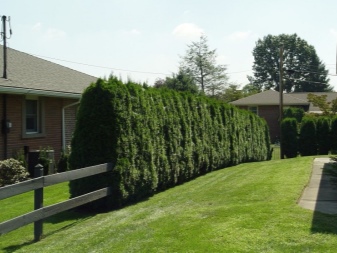
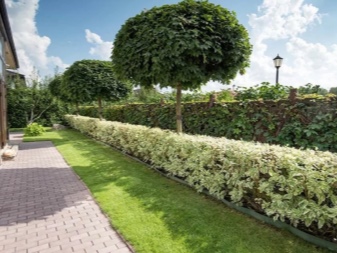
To accomplish this task, hedges are used - a type of landscape improvement of suburban space using trees and shrubs. This type of landscaping masks a high fence, making it invisible, and also hides the site from neighbors, if necessary, prevents strangers from entering the territory.
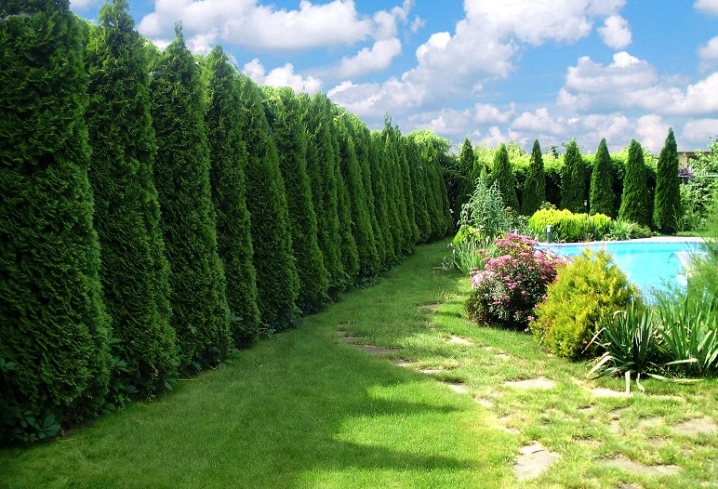
There are many advantages to hedges.
-
Durability. Designed and planted once, they delight for many years and only get better over time.
-
Easy care. Most trees and shrubs specially used for zoning purposes are unpretentious. Subject to the conditions of planting, only periodic watering and sanitary pruning are required. Of course, the participation of a specialist is necessary to give a certain shape.
-
Aesthetic look. The plantings give the area a finished and well-groomed look with the right choice of plant types for the hedge.
-
Protection from prying eyes. The density of the plantings allows you to hide the fence from the inside or outside. If the fence is with gaps, then the trees will close the site from neighbors and protect personal space from prying eyes.
-
Decorativeness at different times of the year. Using evergreen, fast-growing conifers, interesting structural compositions can be created.
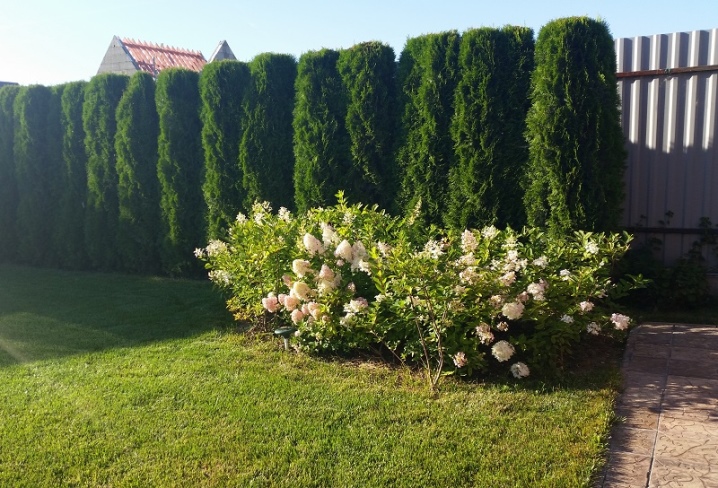
Which ones are suitable?
When planting trees along the fence, it is necessary to take into account the natural conditions: soil type, climate and surface relief of the site, the location of the site, as well as the location on the territory of various buildings and the distance from them to the fence.
These features affect the layout of the plantings. For example, if the house is located close to the fence, then, most likely, in the future, overgrown trees will block the path that runs along the house. Natural conditions also influence the choice of plants. On the sunny side, light-loving plants will develop well, and in the shade of a high fence it is better to plant trees and shrubs that are undemanding to sunlight.
When planting, it is worth considering the location of the site on the cardinal points. The tallest trees should be placed on the north side so that they do not interfere with the development and growth of short plants and shrubs.
It is better if there are plantations from the shade-tolerant group on the north side, since these areas are darker than the south.


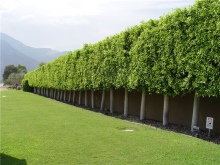
It is possible to determine which trees are better to plant along the hedge - fruit or decorative, based on the preferences of the owners of the backyard territory. If a garden is planned in a small area, then fruit trees can be planted along the fence on the north side. So the overgrown and formed crown will not shade other plants.
If the territory is large, and there is enough space for a garden, then plants of the decorative group are suitable for the hedge. Their main differences when choosing:
-
all varieties should tolerate crown formation well and create geometrically beautiful silhouettes;
-
all varieties must be fast growing.
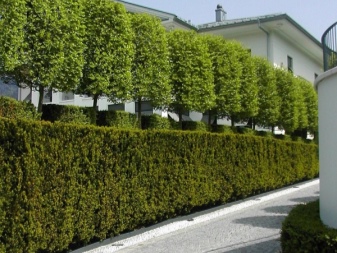
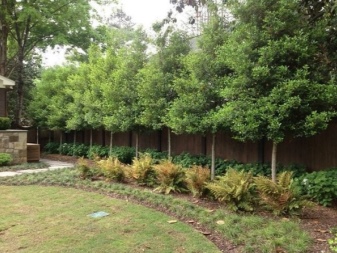
Most often, small-leaved linden and thuja are used for planting.
Small-leaved linden has a number of remarkable properties. It is frost-resistant, shade-tolerant, unpretentious, grows on any soil, easily tolerates a haircut and forms a beautiful crown, after a few years forms a dense wall more than 3 meters high.
Growing from seeds or seedlings is a long and laborious process. Usually they buy trees over 15 years old and prune them when planting. After 15-20 days, young shoots appear, which in the future will form a dense green wall. This will take about 4 years.
Individual trees can be planted along the fence, forming a spherical or square shape. Such a green fence will grow much higher than the fence.
The only thing that needs to be taken into account in this case is the norms of SNiP.
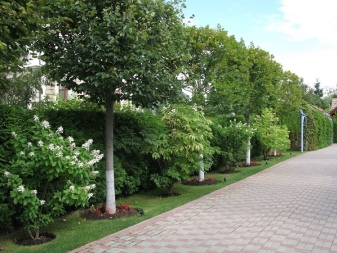
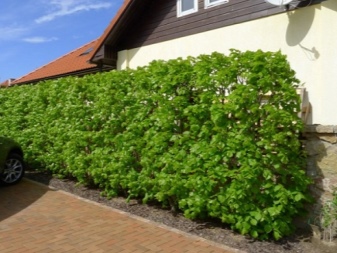
An evergreen thuja tree grows up to 3 meters. It is used to create hedges and for landscaping areas near fences from the inside or outside of the personal plot.
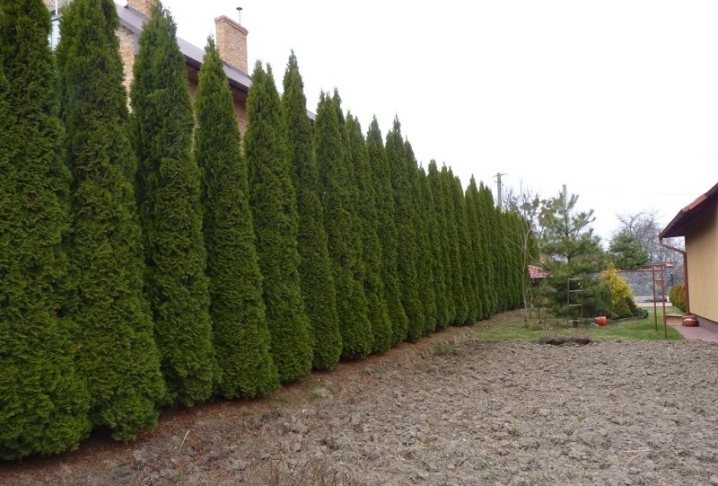
Among the advantages of thuja:
-
endurance;
-
grows in sunlit areas and in the shade;
-
resistance to low and high air temperatures;
-
is characterized by strong branching;
-
tolerates pruning well and takes any shape at the whim of the gardener;
-
evergreen;
-
will remain beautiful at any time of the year;
-
has phytoncidal properties.
Thuja burns out in the bright sun and takes on a brownish color, so it is better to plant it in the shade of a fence.

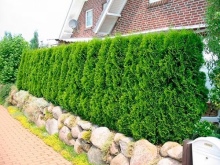

When choosing trees of different varieties, a number of criteria must be taken into account.
-
Functionality. The ability of a plant to perform certain functions in a specific area: vertical gardening, the ability to trim, the formation of a dense green wall, and much more.
-
Compatibility with a group of plants. Here it is necessary to take into account the seasonal rhythms of plants and the change in colors depending on the season. If you plan to plant in a group, it is necessary that the plants are combined according to the life cycle, the shape of the crown and leaves, the brightness of flowering.
-
Sizes of adult plants. In small areas along fences, it is better to use shrubs and small trees; in large areas, you can combine different plants in height, or focus on a group of tall trees.
-
Growth direction. To create structural compositions, it is necessary to take into account the direction of growth of the shoots of the plants planted together. It is better to combine vertical bushes with spherical undersized plants, since they will be visually lost when planted with trees.
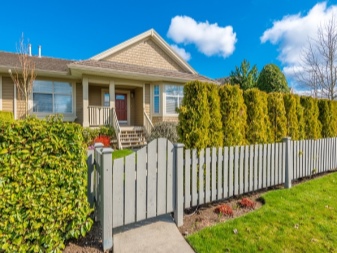
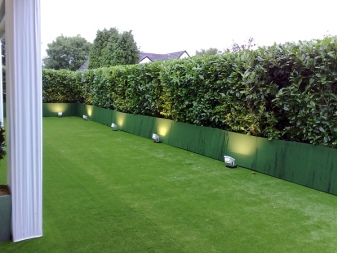
How far to plant?
When planting trees, you must follow the rules that are enshrined in SNiP. These standards are mandatory. Failure to comply may lead to litigation.
Standards are needed to prevent negative consequences:
-
the overgrown crown can block the light to the plants of the neighboring area;
-
a powerful root system of trees interferes with earthworks;
-
the question of crop ownership, if branches with fruits hang down on someone else's plot.


Distance to the fence
Important: tall trees are planted 4 meters or more, medium in height - from 2 meters, shrubs - 1 meter from the neighbor's fence.
SNiP does not define tall, medium-sized and low plants, which introduces some confusion.
Lawyers resolve the issue on a case-by-case basis when a claim arises from neighbors.
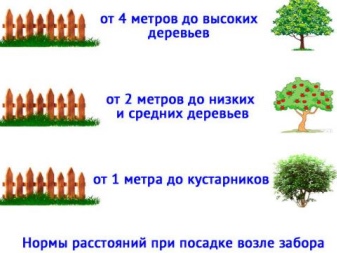
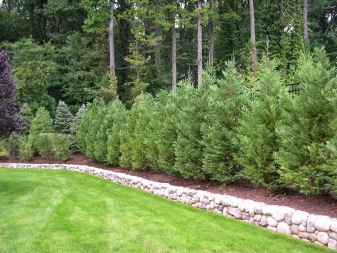
Distance to buildings, utility blocks and communications
The distance from a tall tree to a capital structure must be at least 5 meters; to the utility block - from one meter; to the garden path - from one and a half meters; to communications - from 2 meters.
This is due to the fact that an overgrown powerful root system can destroy the foundation of a house, damage brickwork, prevent pipelines and utilities from being repaired, create an emergency when approaching a gas pipeline.
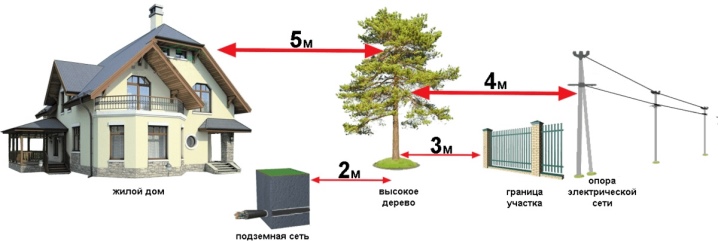
If you are planning a hedge between sites, do not forget that the height requirements are the same as for a regular fence. The fence should not create a shadow for the adjacent area.
Even if you have good relations with your neighbors, you need to remember that the situation can change. A neighboring plot may have another owner, and then a high fence or trees planted near it may cause legal proceedings.




































































The comment was sent successfully.